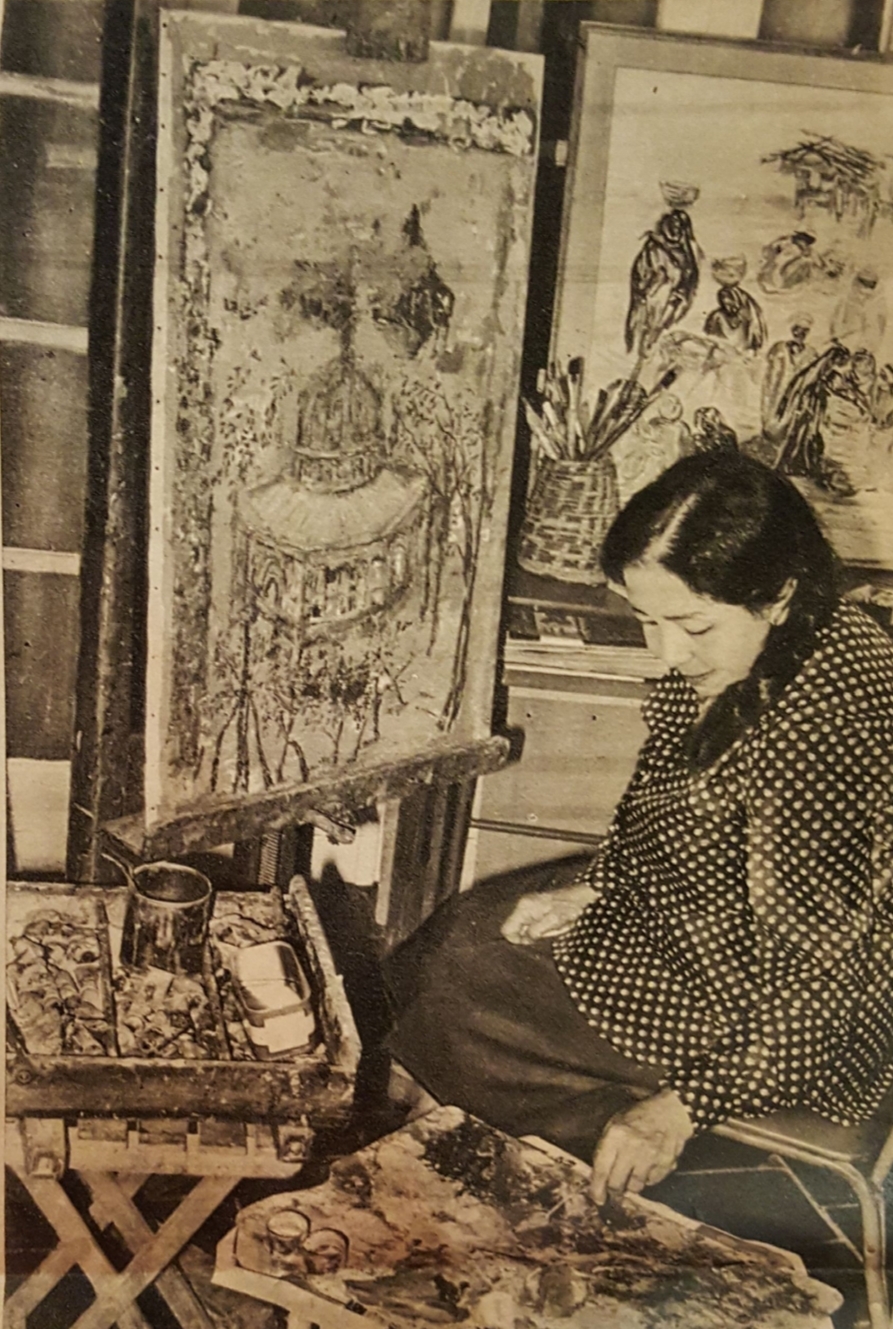
Tahia Halim (1919-2003) was born in Donkola, Sudan, where her father was posted through his professional engagement with the Palace. Her primary education in music, French and painting was inside the Royal Palace of Cairo, where she was raised, as her father was the aides-de-camp or military laureate of King Fouad I of Egypt.
Between 1939-1941, Tahia Halim began taking drawing lessons in the atelier of the Syrian painter Youssef Trabulsi. She then moved to the atelier of Elico Jerome between 1941-43, a Greek artist residing in Cairo, before joining the studio of Hamed Abdalla. Eventually, Halim and Abdalla married in 1945. Short-lived, their marriage ended in divorce in 1946. They married again in 1949 and moved to Paris, where Tahia Halim pursued formal studies at the Académie Julian between 1949 and 1951.
In 1960, she was one of the artists awarded a government stipend for dedicating themselves to art production. She won the gold medal at the Salon du Caire during the same year.
She spent the year 1963 in a hospital in London, being treated for eye rheumatism by the government of Egypt. In 1962, she joined a collective trip to Nubia, initiated by the then-minister of Culture Tharwat Okasha to document life as it would never be again. The trip was a turning point in the life of Tahia Halim, as from then on, her devotion to Nubia would take over the subjects of the majority of her paintings.
Tahia Halim’s career spans four decades, during which she came to be known as the pioneer of folkloric impressionism. An independent artist, stylistically and ideologically, Tahia Halim belongs to the Golden Triangle of Egyptian women artists with Inji Efflatoun and Gazbia Sirry. Until 1945, she produced works of academic nature. From 1945 to 1949, she concentrated on the crowds of Egypt and was highly influenced by her elder peer, the Egyptian painter Marguerite Nakhla. After her return from Paris, Halim began to tackle her devotion to Egypt and Egyptian daily life, which climaxed in the Nubian stage. Her signature style was revealed in the painting ‘Hanan’ [Tenderness], exhibited at the Guggenheim Museum in New York in 1958; she became the first female to win the Guggenheim Prize. The Guggenheim Museum later purchased Halim’s painting ‘Tenderness.’
Following the Tripartite Aggression of 1956, Tahia Halim vowed to abandon any stylistic connotation deriving from the Western academy. Instead, she created her own independent movement of legends and myths based on daily popular rituals. Influenced by ancient Egyptian wall temples drawings and Coptic art and characterized by a simple and poetic style, she established herself as one of the pioneers of the Modern Expressive Movement, as she excelled in expressing the Egyptian character’s idiosyncrasies. She simplified lines, suppressed the third dimension, stressed expressionism over realism, and used bold colors. Her works concern the Nile, boats, and the popular and national subjects, as well as her infatuation with the Nubian woman and scenes of old Nuba before it was drowned under the waters of Nasser Lake.
Tahia Halim received five national prizes by the Egyptian State – the Golden Award from the Cairo Salon in 1960; the Ali Labib Gabr prize in 1960; the State Prize in 1968; the Medal of Arts and Sciences of the first degree in 1968 and the Arts Award from the Higher Institute of Culture in 1995. She also took part in the Egyptian Pavilion of the prestigious Venice Biennial in 1956, 1960, and 1970.